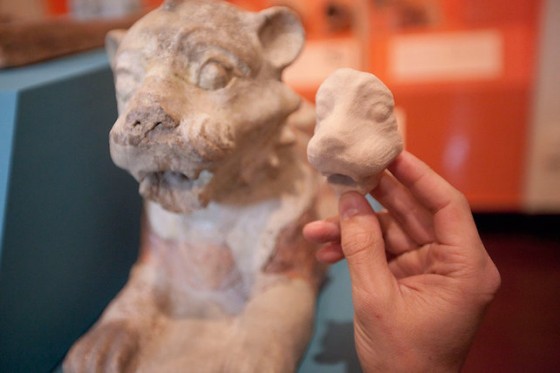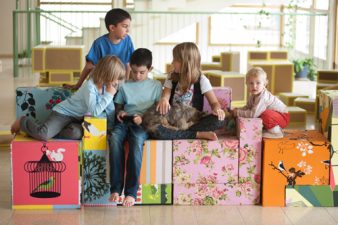Three thousand years ago four stone lions guarded a temple in Iraq, but their work was short lived. The Assyrians invaded the city Nuzi and annihilated everything in sight, including the lions and other artifacts. One lion that remained almost intact now lives at University of Pennsylvania Museum of Archaeology and Anthropology, while fragments of another, its front paws and rear end, have been languishing in the basement of Harvard University’s Semitic Museum since 1930.
Archaeologists haven’t known what to do with the ruined lion, but new restoration opportunities have emerged alongside the rise of 3D modeling and printing. We’re typically skeptical of 3D printing because it enables the fast production of a lot more unnecessary stuff, but there is something astounding about technology that revives an artifact that was first built three thousand years ago. Read on for the scoop.
We’ve seen a variety of applications for 3D printing technology, such as an electric car dashboard, but archaeologists are only now beginning to grasp the ramifications this new wave of technology has for their work.
Assistant director of the Semitic Museum wrote in the Harvard Gazette that digital modeling and fabrication techniques have enabled them to “wring new data from objects that have been in our basement for 80 years,” FastCo.Design reports.
In order to restore missing parts of the lion kept at Harvard, the museum recruited restoration experts Learning Sites, who took a total of 120 photographs of the Penn State lion. From these images, they were able to create an exact 3D replica!
“It is very cool to hold a duplicate of an ancient artifact in your hand, especially one that was created by such leading-edge digital technologies and not by someone spending hours carving one by hand,” Learning Sites President Donald H. Sanders told Co.Design.
“This is not your grandfather’s archaeology.”
Now the two lions are on display at the museum, reunited, but missing their kin.
The next step is to use a CNC router to create a foam middle section in order to complete the resurrection. And then there’s a chance that the Harvard lion will be re-painted its original color, which, as it turns out, was a deep blue.
Lead image by Kris Snibbe/Harvard Staff Photographer





To clarify – the home of the largely complete Nuzi lion is the University of Pennsylvania Museum of Archaeology and Anthropology, which is in Philadelphia and NOT part of Penn State.
OHH, my apologies. Thanks for clarifying. I’ll fix it.